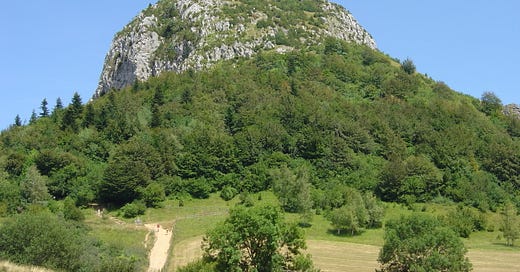Unfortunately, the story of the Cathars and the final siege at Montségur has become a footnote in religious history. It is a stark illustration of how institutions, when threatened, will wield violence and manipulation to preserve their dominion.
There is no divine battle between “light and darkness” here—only the human struggle for power, control, and the brutal enforcement of conformity.
The Cathars Rebel Against a Corrupt Orthodoxy
The Cathars, with their radical dualism and rejection of Catholic sacraments, posed an existential threat to the medieval Church—not because their beliefs were inherently dangerous, but because they undermined the Church’s monopoly on spiritual authority.
Their dismissal of the material world as the creation of an evil god was less a theological innovation than a direct critique of the Church’s opulence and corruption. By advocating asceticism, egalitarianism (including female Perfecti), and a priesthood-free spirituality, the Cathars exposed the rot at the core of medieval Catholicism: its entanglement with wealth, political power, and systemic patriarchy.
The Albigensian Crusade: Religion is the Weapon
The Church’s response to this dissent was not debate or reform but annihilation. The Albigensian Crusade, launched under Pope Innocent III, was a campaign of terror masquerading as divine justice. The Siege of Béziers—where thousands were slaughtered under the grotesque motto “Kill them all; God will know his own”—reveals the barbarity of using faith to justify mass murder.
This was not about saving souls; it was about erasing a challenge to Rome’s authority. Simon de Montfort, the crusade’s merciless enforcer, epitomized the moral bankruptcy of holy war. His atrocities were rewarded with power, a pattern repeated throughout history where zealots are elevated for their loyalty to institutions, not their humanity.
The Perfecti and the Price of Dissent
The Cathars’ spiritual elite, the Perfecti, embodied a defiance that resonates beyond their time. Their asceticism and egalitarianism—particularly their inclusion of women in leadership—stood in stark contrast to the Catholic Church’s rigid hierarchies.
Yet their eventual destruction at Montségur underscores a grim truth: movements that challenge entrenched power structures rarely survive without compromise or force. The Cathars’ refusal to bend ensured their martyrdom, but also their legacy as symbols of resistance against oppression.
Modern Lessons From Ancient History
The Cathars’ atrocity was not a clash of supernatural forces but a human story of how fear and dogma breed violence. Their annihilation was not ordained by gods but orchestrated by men clinging to power. The Church’s crusade against them mirrors modern authoritarianism, where dissent is framed as heresy and crushed under the boot of moral absolutism.
The true “evil” here was not some abstract force of darkness, but the very real consequences of unchecked religious authority. The Cathars’ story is a reminder that progress often comes from those labeled heretics—and that the greatest threats to humanity are not false beliefs, but the institutions that kill to protect them.
Stay curious. Stay heretical. 🔥
This retrospective concludes the series on the Cathars. Next week: The Gnostics—because we should always question authority.
This is the retrospective of a series on the Cathars - Series here: The Daily Heretic




